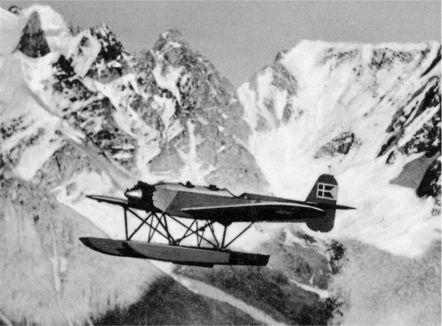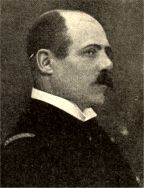|
You are here: 4Campaigns & Battles4Index4The Interim Years |
|||||||||||||||||||||||||||||||||||||||
|
The Interim Years (1919-1939):
Surveying by H.M. II (Heinkel H.E.8) sea
plane in Greenland.
The
Interim Years
|
||||||||||||||||||||||||||||||||||||||
|
In 1932, yet another defense settlement resulted in more cuts in the Navy's numbers. Even so, three new torpedo boats of the GLENTEN class, an inspection ship (INGOLF), and two survey ships, HEJMDAL and FREJA, were built during the following 5 years. These additions, however, were unable to compensate for the retirement of obsolete material. The reductions were so severe the newly appointed naval inspector; Henri Wenck chose to retire from his position in March 1932 after just four months on the job. Therefore, the responsibility for carrying out the defense settlement was left to its main creator, Rear Admiral Hjalmar Rechnitzer. |
Vice Admiral
Henri Wenck |
Once again, war clouds gather over Europe
With Hitler's ascension to power in Germany in 1933 war clouds began, once again, to gather over Europe. The consequence of this was a governmental revision of the defense settlement in 1937.
The Navy was granted more funds and the building of new ships began immediately, among these four H class submarines and six SØLØVEN class minesweepers. However, the fourth submarine and three of the minesweepers were unfinished at the outbreak of the Second World War.
Further, project work began for a mine ship, the LINDORMEN, two minelayers, LOUGEN and LAALAND, and two large torpedo boats NYMFEN and NAJADEN. The latter two, however, were not finished until after the Second World War and were renamed WILLEMOES and HUITFELDT.
At the onset of the war in September 1939, the navy was of so modest a size that it was powerless against the German fleet. It was also incapable of defending possible Danish neutrality, as had been the case in the First World War.
|
Sources: |
||
|
& |
Danmarks Flaade, by Lieutenant Commander K. Dahl og H. Hjorth-Nielsen, Published by Selskabet til udgivelse af Kulturskrifter, Copenhagen, 1934 |
|
|
& |
Flåden gennem 450 år, by Steen R. Steensen, Martins Forlag, 2nd edition, Copenhagen, 1970 (ISBN87-566-0009-7) |
|
|
& |
Orlogsmuseet - Introduktion til Flådens historie, by Ole Lisberg Jensen, Royal Danish Naval Museum, Copenhgaen 1994 (ISBN 87-89322-14-2) |
|
|
44You are also referred to the Naval Bibliography |
||
![]()
- Do you miss a major event on this Site,
or do you hold a great story?
Are you able to contribute to the unfolding of
the Danish Naval History,
please
e-mail
me, enclosures are welcome.
Please remember to list your sources.
You can also use the Naval Web Forum on this web-site.
![]()
|
MORE IN-DEPTH STORIES FROM |
|
Disaster on the GEJSER (1923) |
|
THE TOPIC STORIES: |
|
- Wars against England (1801-1814) - Reconstructing the Navy (1814-1848) - The 1st Schleswig War (1848-50) - The interim War Years (1850-64) - The 2nd Schleswig War (1864) - The long Period of Peace (1864-1914) - The Navy during the 1st World War (1914-1918) - The Interim Years (1919-1939) - The Navy during the 2nd World War (1939-1945) - The Cold War Period (1945-1989) - |
-
This page was last updated: -
This page was first published: March 11, 2006
Copyright © 2013-2016 Johnny E. Balsved - All rights reserved - Privacy Policy



-2546-1980-n.jpg)
-229-1958.jpg)
-1004-1970.jpg)
